Hardening off refers to gradually acclimating young plants to harsher outdoor conditions. This step is essential because indoor environments shield seedlings from fluctuating temperatures, strong winds, and intense sunlight they will inevitably face outside. Subjecting them to these stressors in a controlled manner to help strengthen their stems, develop thicker leaves, and promote root growth. Hardening off seedlings quickly ensures their successful transition from indoor to outdoor conditions.
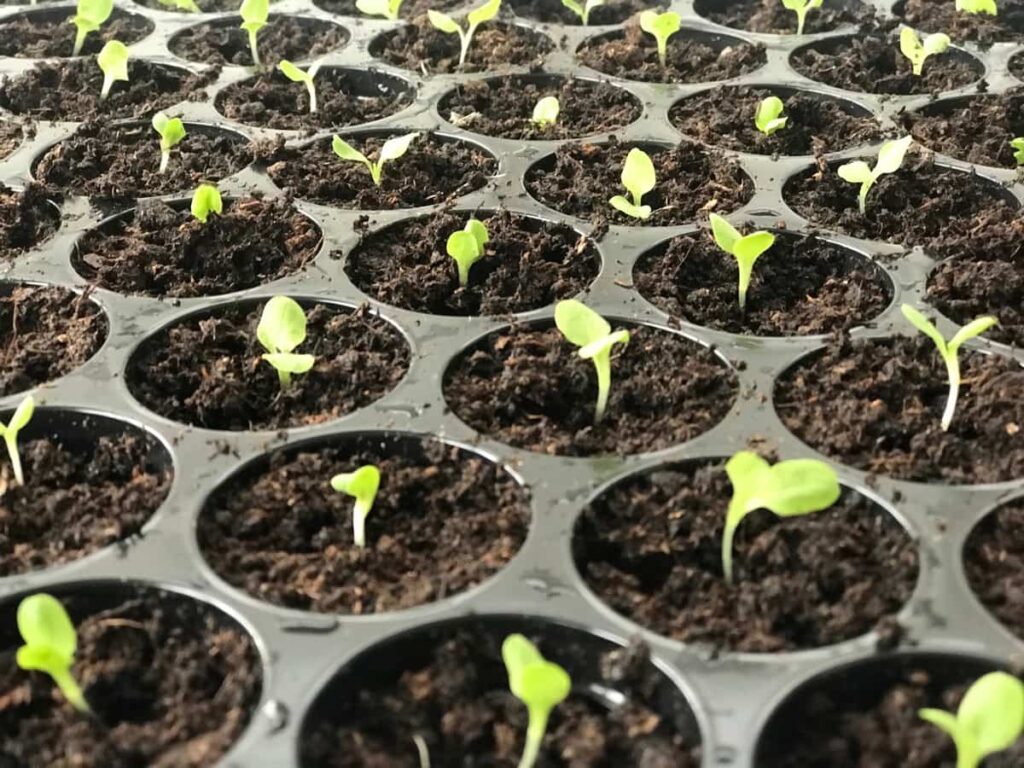
How to Harden Off Seedlings Quickly
The Benefits of Quick Hardening-Off Techniques for Seedlings
One of the key benefits of using quick hardening-off techniques for seedlings is that it allows them to adapt more rapidly to harsh outdoor conditions. By gradually exposing seedlings to factors such as temperature fluctuations, wind, and direct sunlight, they become better equipped to handle these challenges once planted in the garden. How do you harden off seedlings quickly indoors? Quick hardening off also helps strengthen seedlings, promoting stronger root development and overall plant growth.
When seedlings are exposed to varying weather conditions during this process, they learn to regulate their water intake and tolerate different moisture levels. Another advantage of quick hardening is reducing the likelihood of transplant shock. By acclimating seedlings slowly over a shorter period, they experience less stress when moved from an indoor environment to outside. Additionally, quick hardening off enables gardeners to have earlier planting dates.
Step-by-Step Process for Hardening Off Seedlings Quickly
- Start by gradually exposing your seedlings to outdoor conditions. Begin by placing seedlings outside in a sheltered place for a few hours each day, gradually increasing the time over several days. This helps them acclimate to the fluctuating temperatures and increased sunlight.
- Protect your seedlings during this transition period. Use cloches or row covers to shield them from strong winds, heavy rain, or intense direct sunlight. This will prevent damage and stress on delicate leaves and stems.
- Outdoor conditions may require less frequent watering as compared to indoor care. Monitor soil moisture levels carefully and water only when necessary. Monitor temperature and light conditions during the hardening off period.
- Watch weather forecasts and be prepared to bring seedlings indoors if there’s a risk of frost or extreme weather conditions that could harm them. You can ensure that your seedlings are hardened off quickly while minimizing stress and maximizing their chances of survival once transplanted into the garden bed or containers outdoors.
In case you missed it: The 19 Best Garden Sprayers for Your Home Garden, Patio, and Lawn within your Budget
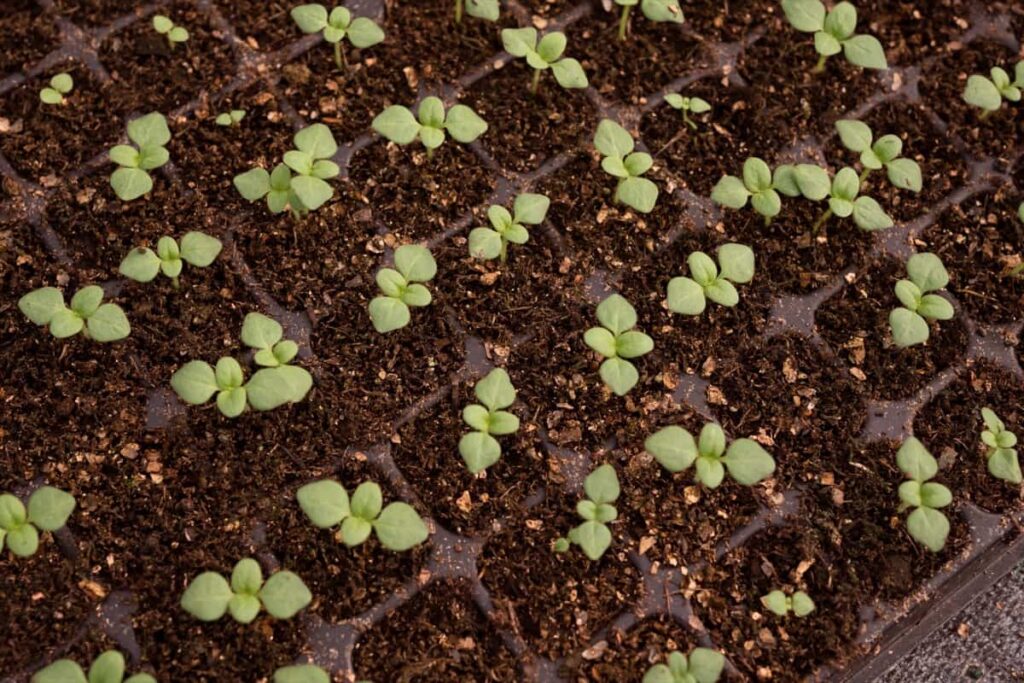
Preparing Seedlings for Outdoor Conditions: Techniques and Tips
One important aspect is gradually introducing them to outdoor conditions. During this period, it’s essential to monitor temperature and light conditions. Pay attention to weather forecasts and avoid exposing your delicate seedlings to extreme temperatures or harsh sunlight. Gradual exposure will allow them to acclimate slowly without suffering from shock.
As you begin hardening off your seedlings, reduce watering frequency but increase the water given each time. Once planted outdoors, this will encourage deeper root growth that can withstand dry spells. To protect your seedlings during the hardening-off process, consider using row covers or cloches that shield them from wind, pests, and sudden temperature changes. These protective measures can prevent damage while allowing necessary airflow.
Remember that every plant has different needs when it comes to hardening off. Some may require more time indoors before facing outdoor conditions, while others may be more resilient right from the start. Observe how your specific plants respond throughout the process and adjust accordingly.
Gradual Exposure to Outdoor Elements: A Key Aspect of Quick Hardening Off
This step in the process is crucial for helping young plants adjust and acclimate to the harsher conditions they will encounter outside. During this phase, you must gradually introduce your seedlings to sunlight, wind, and fluctuating temperatures. Start by placing them outdoors for short periods each day, preferably during mild weather. Then, gradually increase their time outside over several days or weeks.
This gradual exposure allows your seedlings to adapt and build up tolerance against potential stressors slowly. It helps strengthen their stems and leaves while encouraging root development. Exposing them little by little gives them a chance to toughen up without overwhelming them. Remember that abrupt changes in the environment can shock and damage delicate plants. So, slow and steady when transitioning your seedlings from indoor comfort zones to the great outdoors.
Protection during the Hardening Off Process
Protecting your seedlings during hardening off is shielding them from strong winds. Wind can damage delicate leaves and stems, stunting their growth or even causing them to break. To avoid this, consider using windbreaks such as temporary fences or strategically placed barriers like tall plants or structures. Another element to consider is protecting your seedlings from intense sunlight.
After being indoors for an extended period, direct sun exposure can shock and scorch tender leaves. Gradually introduce your seedlings to outdoor light by placing them in a partially shaded area first and gradually increasing their exposure over time. In addition to wind and sunlight protection, you’ll also want to safeguard against pests and animals that may see your young plants as a tasty snack.
In case you missed it: The 19 Best Garden Sprayers for Your Home Garden, Patio, and Lawn within your Budget
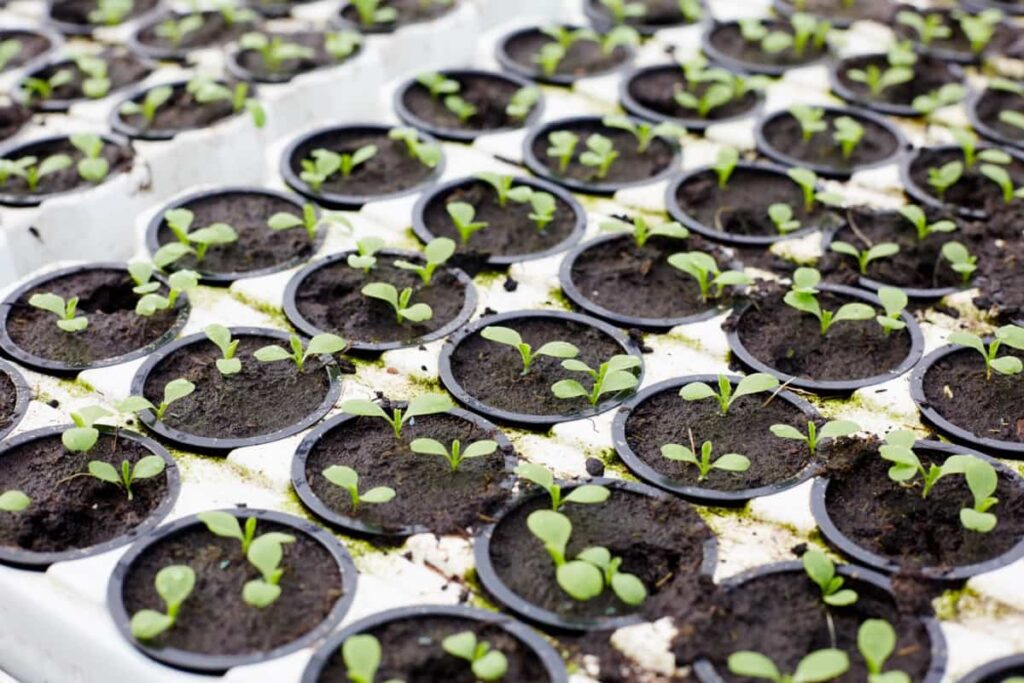
Use physical barriers like netting or cages around each plant or apply organic pest control methods if necessary. Keep an eye on weather forecasts during the hardening off period. If there’s a frost or extreme temperature fluctuations risk, bring your seedlings indoors overnight or cover them with protective cloths such as floating row covers or blankets.
Adjusting Watering and Fertilization for Seedlings during Hardening Off
When starting the hardening-off process, reduce the frequency of watering slightly. This helps in gradually acclimatizing the seedlings to drier outdoor conditions. However, be mindful not to let them dry out completely, which can cause stress or damage. Similarly, adjust fertilization during this period. Reduce or stop using a fertilizer with high nitrogen content as it promotes leafy growth rather than root development.
Instead, use a balanced fertilizer that provides essential nutrients while supporting strong root growth. Regularly monitor soil moisture levels by checking the top inch of soil with your finger. If it feels dry, water thoroughly, but avoid excessive watering, which can affect root rot or mold issues. Remember that every plant has different requirements for watering and fertilization during hardening. Research specific guidelines for each type of seedling you have before making adjustments.
Monitoring Temperature and Light Conditions during the Hardening Off Period
Temperature fluctuations can greatly impact the health and growth of seedlings. During the hardening off process, monitoring daytime and nighttime temperatures is essential. Start by placing your seedlings in a sheltered spot outdoors during mild weather conditions, gradually increasing their exposure. Keep an eye out for sudden drops in temperature or frost warnings, as these can be detrimental to young plants.
Light conditions also play a significant role in the hardening off process. Indoor lighting cannot fully replicate natural sunlight, so gradually exposing seedlings to increasing direct sunlight is key. Start with a few hours of morning or late afternoon sun and gradually extend the exposure time each day. Regularly check weather forecasts for changes affecting temperature or cloud cover throughout the hardening off period. If needed, adjusting the placement or providing temporary shade will help protect delicate seedlings from excessive heat or intense sunlight.
In case you missed it: How to Grow Mangosteen from Seed: A Comprehensive Guide to Planting and Care
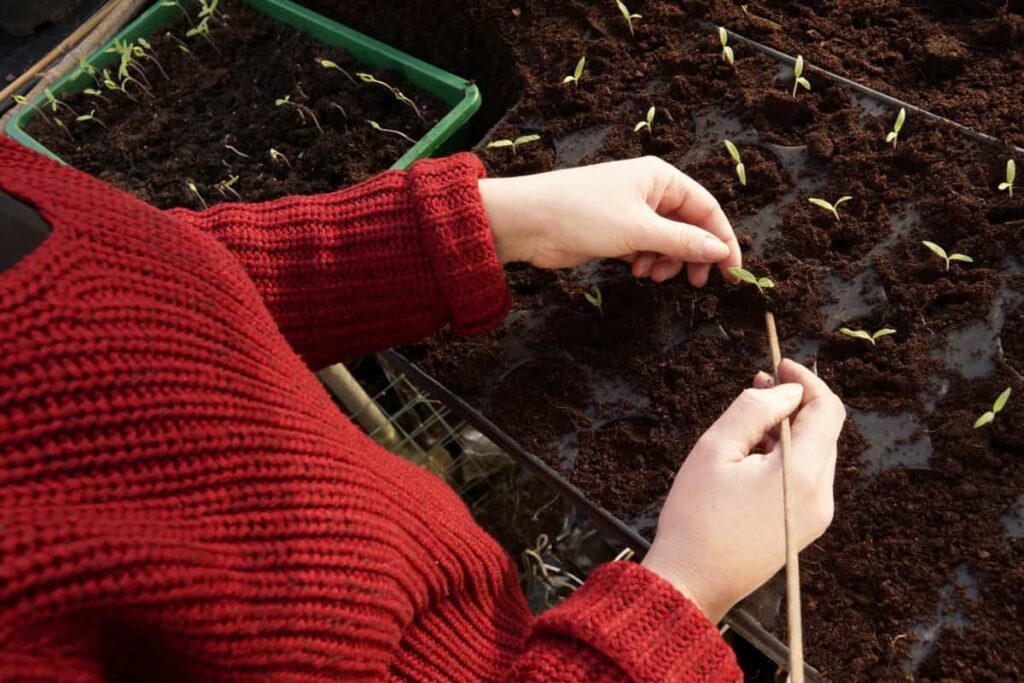
How Long Does It Take to Harden Off Seedlings?
The duration of the hardening off process can vary depending on various factors, primarily weather conditions. Generally, it takes about one week to harden off seedlings and fully prepare them for outdoor planting. However, there are instances where this period may extend up to two weeks.
During the hardening off period, it is crucial to gradually expose your seedlings to outdoor elements such as sunlight, wind, and fluctuating temperatures. This gradual exposure helps toughen them up and acclimate them to their new environment. Remember that each plant variety may have specific requirements for hardening off; therefore, monitoring their progress closely will help determine when they are ready for permanent placement in your garden or containers.
What is the Best Time to Harden the Seedlings Why?
The best time to begin the hardening-off process for your seedlings is crucial for their successful transition from indoor to outdoor conditions. It’s important to start this process about 7 to 14 days before planting them in your garden. Starting the hardening-off process within this timeframe gives your seedlings sufficient time to develop stronger stems and roots. This will make them more resilient and better equipped to handle fluctuations in temperature, wind gusts, and other outdoor stressors.
What is the Process of Hardening Off?
Hardening off seedlings is an important step in preparing them for life outdoors. It involves gradually acclimating the plants to the outdoor environment, including changes in temperature, light exposure, and wind. Start by introducing your seedlings to outdoor conditions for short periods each day. Begin with just a few hours in a shaded area, gradually increasing the time and exposure to sunlight over several days.
This allows the plants to adjust slowly without experiencing shock. Next, pay attention to temperature fluctuations. Avoid exposing your seedlings to extreme temperatures during this period. If there’s an unexpected drop in temperatures or frost warnings, bring them indoors or provide protection, such as using row covers or cold frames.
What Happens if You Don’t Harden Off Seedlings?
First and foremost, failing to harden off your seedlings can result in shock. When plants are abruptly exposed to harsh outdoor conditions without any acclimation period, they can become stressed and struggle to adapt. This shock can stunt their growth or even cause them to die altogether. Furthermore, not hardening off seedlings leaves them vulnerable to damage from wind, temperature fluctuations, and intense sunlight. Seedlings not gradually introduced to these elements may wilt or suffer sunburned leaves.
In case you missed it: How to Germinate Seeds: Techniques for Faster Germination of Vegetables, Flowers, Fruits, and Herbs
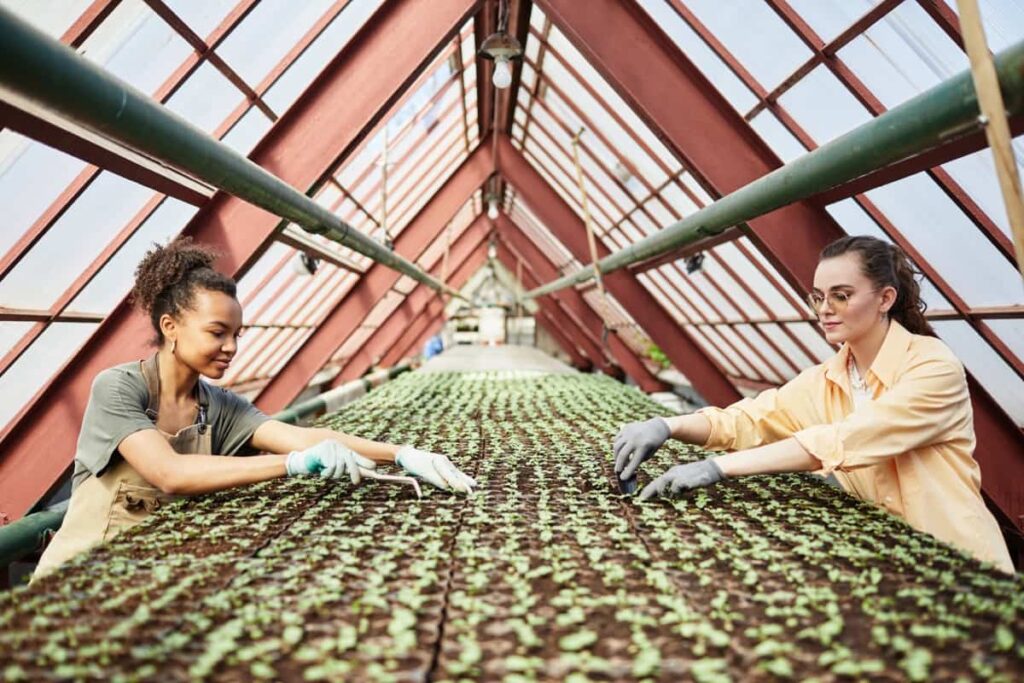
In addition, neglecting the hardening-off process increases the likelihood of pest infestations and diseases affecting your plants. Without gradual exposure outdoors, pests have easier access to attack weak and unprepared seedlings. Failing to harden off your seedlings means you’re missing out on an opportunity for stronger and more resilient plants. Slowly introducing them to outdoor conditions allows their stems and leaves to thicken up and become better equipped for life outside the controlled indoor environment.
How Long to Harden Off Seedlings?
Generally, this process typically takes about one week, but it may extend up to two weeks if there is an unexpected and significant temperature drop. The key aspect to consider is gradually exposing your seedlings to outdoor conditions. During this time, you should slowly increase their exposure to sunlight and wind by placing them outdoors for a few hours each day. Begin with a sheltered spot and gradually move them into more direct sunlight and windy areas over time.
What Are the Four Steps of Hardening Off?
- Gradual Exposure – Start by gradually exposing your seedlings to outdoor conditions. Begin with just a few hours outside in a sheltered spot, then increase the time and exposure as they become acclimated.
- Protect from Harsh Elements – During this process, it’s essential to protect your seedlings from harsh elements such as strong winds or extreme temperatures. Use cloches or row covers to shield them until they become more resilient.
- Adjust Watering and Fertilization – As your seedlings adapt to their new environment, adjust their watering and fertilization routine accordingly. They may require less water and lower amounts of fertilizer compared to when they were indoors.
- Monitor Temperature and Light Conditions – Monitor temperature fluctuations and light levels during the hardening-off period. This information will help you determine if any adjustments need to be made for optimal growth.
Avoiding Common Mistakes when Hardening Off Seedlings Quickly
One mistake to avoid is exposing your seedlings to harsh outdoor elements too soon. Gradual exposure is key during the hardening off process. Start by locating them outdoors in a sheltered spot for a few hours each day and gradually increase the duration over several days. Another mistake is forgetting about protection during this vulnerable period. Even though you’re trying to toughen up your seedlings, they still need protection from extreme weather conditions.
Consider using cloches or row covers to shield them until they become more resilient. Many gardeners also forget to adjust their watering and fertilization practices during the hardening off process. Seedlings previously pampered indoors may not be able to handle excessive moisture or high levels of nutrients right away. Gradually reduce watering frequency and fertilizer application as they acclimate to outdoor conditions.
Monitoring temperature and light conditions is crucial during this phase as well. Sudden temperature drops can shock delicate seedlings, so keep an eye on weather forecasts and bring them indoors if necessary. Similarly, gradual exposure to direct sunlight will prevent sunburn on tender leaves. By avoiding common mistakes and following proper techniques for quick hardening off, you’ll set yourself up for success when transplanting your seedlings into their permanent outdoor home.
In case you missed it: 20 Best Plant Nurseries in Manila: Wholesale Garden Centers for Flowers, Fruits, Indoor, and Outdoor Plants

Ensuring Successful Transplantation after Quick Hardening Off
- Prepare the soil: Before planting the seedlings, ensure the soil is well-prepared and free from weeds or debris. Loosen the soil and then add organic matter to improve its fertility.
- Please handle with care: Be gentle to avoid damaging their delicate roots when removing seedlings from their containers or trays. Hold them by their leaves rather than pulling on the stem.
- Dig proper holes: Dig holes slightly larger than each seedling’s root ball. This will allow for easier root expansion once planted.
- Plant at appropriate depth: Make sure to plant your seedlings at the same depth they were growing in their previous container or tray.
- Water thoroughly: After planting, water each seedling thoroughly to settle the soil and provide hydration for a healthy establishment.
- Protect from extreme conditions: Provide temporary shelter such as row covers or cloches if there is a risk of sudden temperature drops or excessive wind exposure immediately after transplantation.
Conclusion
Harden off seedlings quickly refers to gradually acclimating young plants to outdoor conditions, helping them transition from a controlled indoor environment to the more challenging outdoors. This ensures their survival and promotes healthy growth once transplanted into the garden. The main goal of quick hardening-off techniques is to speed up this process without compromising the health or vigor of the seedlings.
- Budget Friendly Sheep Shed Ideas: Cheap and Low-Cost Tips
- How Much Do Cattle Farmers Make: Revenue Streams in Cattle Farming
- Management Pests and Diseases in Your Cotton Field
- Sheep Farming Business Plan for Beginners
- Aquaponic Farming at Home: A Step-By-Step Guide
- Profitable Village Farming Business Ideas in 2024
- High-Yield Aquaculture: Fast-Growing Fish for Farming
- Effective Fish Pond Construction Techniques for Beginners
- Irrigation and Water Management in Pineapple Farming
- Blossom to Harvest: Mastering Flowering and Pollination in Papaya Farming
- Pig Fattening Essentials: From Selection to Sale for Beginners
- Raising Wagyu Cattle: A Complete Guide for Premium Beef Production
- Soil Types and Their Water Holding Capacity
- Optimizing Irrigation Schedules for Coconut Groves for Enhanced Yield
- Espresso Your Garden: Coffee Grounds for Healthier Acid-Loving Plants
- The Best Soil Mix for Snake Plants: How to Mix Your Own Snake Plant Soil
- Green Thumb Success: Expert Tips for Cultivating Greenhouse Beans All Year Round
- Bloom All Year Round: The Ultimate Guide to Indoor Hyacinth Care
- Eco-Friendly Gardening: How to Make Liquid Fertilizer from Kitchen Waste
- Ultimate Guide to Grow Anise in Pots: Explore Seed Propagation to Harvesting
- Guide to Raising Chester White Pigs: Discover Breed Facts to Growth Management
- Mastering the Elegance: The Ultimate Guide to Weeping Cherry Tree Care, Planting, and Maintenance
- Ultimate Guide to Planting Garlic in Grow Bags: Growing Strategies for Beginners
- How to Fix Spider Plant Leaf-Related Problems: Natural and Organic Remedies
- 10 Reasons Why Your Tulsi Plant is Shedding Leaves: Home Remedies and Solutions
- Optimizing Growth and Yield: The Advantages of Palm Bunch Ash Fertilizer
- Utilizing Neem Oil Extract as a Natural Pesticide for Hydrangea
- From Soil to Harvest: Various Ways in Which Farmers Can Use AI Tools
- Steps to Encourage and Induce Citrus Flowers: A Comprehensive Guide
- How to Fix Snake Plant Leaf-Related Issues: Natural and Organic Remedies
- Transform Your Garden into a Fragrant Oasis with Raat Ki Rani (Night Blooming Jasmine)
- Discover the Ideal Chicken Breeds for Philippine Farms
- How to Create a Poultry Egg Farm Business Plan for Profits
- Grow Lemon Cucumbers Like a Pro: Insider Techniques for Bountiful Yields
- Ultimate Guide to Caring for Your Pink Princess Philodendron: Tips for Thriving Variegation
- Areca Nut Profit Per Acre: Calculating Yield and Cost of Cultivation
